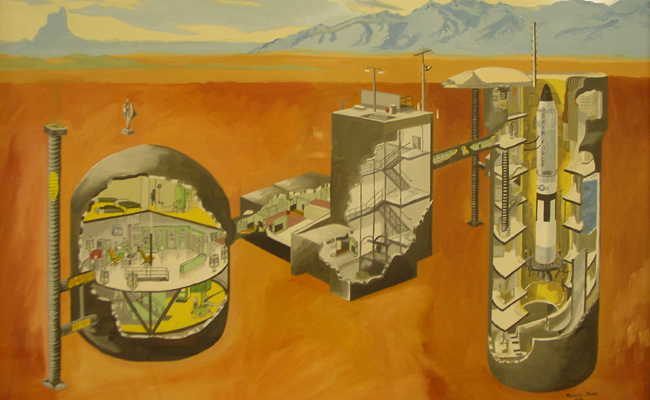The missile compound is broken into three parts: The entryway which includes a stairwell, with a pair of blast doors leading to the "hardened" part of the site, the three-story command center, and the seven-level silo itself.
The missile silo was a reinforced concrete structure with inside dimensions of approximately 146 feet in depth and 55 feet in diameter. A launch duct, with an acoustical lining, was located in the center of the silo. Associated installed equipment, structures, and mechanisms included a survey transfer station, silo closure door, retractable work platforms, a collimator room, hazard sensing devices, and a small equipment and personnel elevator operating between levels 2 and 8. Two exhaust ducts carried missile exhaust and ingested air from the flame deflector, through cascade vanes, to the surface.
In the mid-'80s as part of the Strategic Arms Limitations Treaty (SALT) with
the then-Soviet Union, the other 53 Titan II sites were destroyed or filled
with concrete to make innoperable. At the time of the SALT treaty theTitan
II sites were already considered obsolete, and were being replaced by a more
mobile and less infrastructure dependent launch system which was much cheaper
to maintain.


